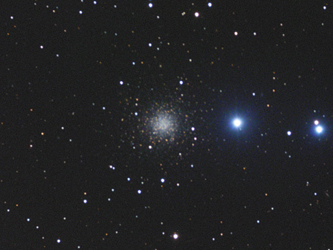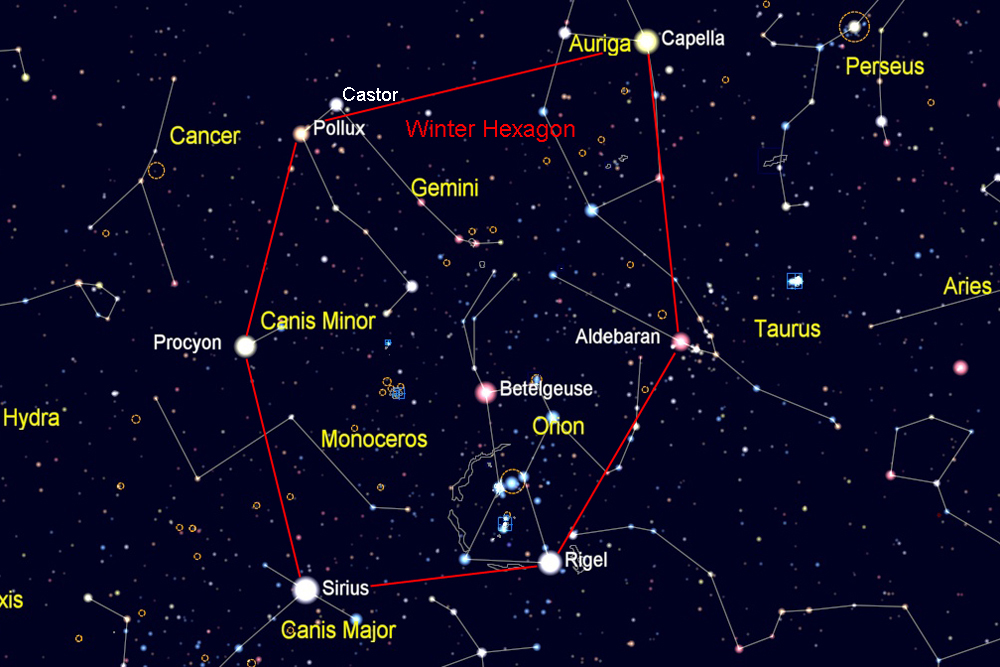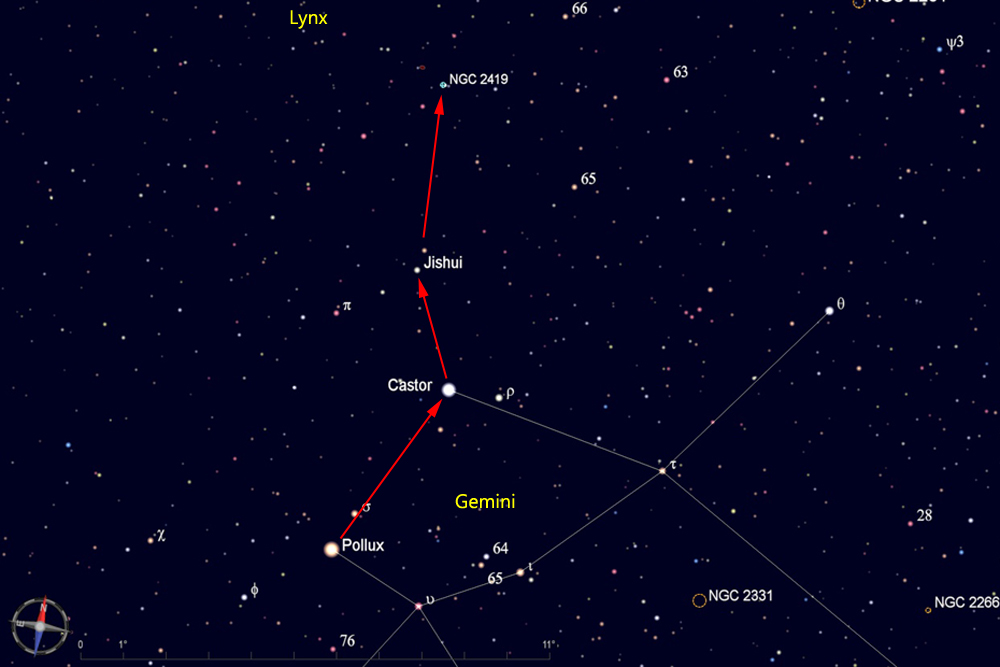270,000 light years away, this is the most distant globular cluster that is still part of our Milky Way galaxy. Despite its nickname as the Intergalactic Wanderer, it is actually a part of our galaxy. At about magnitude 10, this cluster can be seen in amateur telescopes of modest size as a hazy ball, and with large scopes a few individual stars may be resolved around the periphery.
|
 |
| Evening visibility: |
December-April |
| Best viewed with: |
telescope |
| |
Printable chart (pdf) |
View larger image. |
Directions:
Find the Winter Hexagon, which is composed of six of the brightest stars in the sky--Sirius, Procyon, Pollux, Capella, Aldebaran, and Rigel. On mid-winter evenings, these stars form a large oval stretching from low in the south to nearly overhead. As spring begins, the Winter Hexagon sinks toward the west. The constellation Orion and its bright red star Betelgeuse are inside the Hexagon.
For this star hop, find Pollux in the constellation Gemini. |
 |
| From Pollux, move to Castor and then go north-northeast about 3 degrees to reach 5th magnitude Jishui and a 5.5 magnitude star just to its north, both of which should be easy to see in a finderscope. From this pair of stars, go due north another 4 degrees to reach NGC 2419. This cluster can be hard to find because there are no bright stars nearby, but look carefully for a small fuzzy patch of light. |
 |
| Star charts created with Cartes du Ciel |
| |
| |


